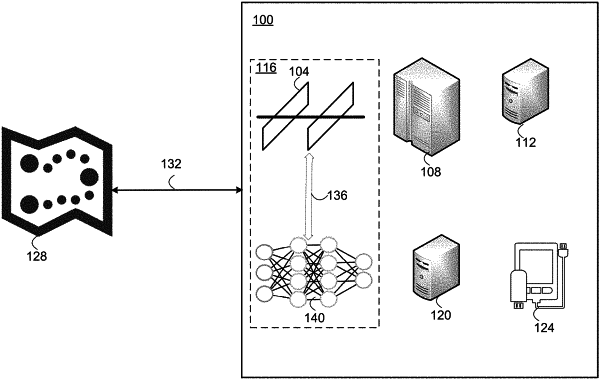| CPC G01V 99/005 (2013.01) [E21B 49/087 (2013.01); G06F 30/28 (2020.01); G06N 3/08 (2013.01); E21B 2200/20 (2020.05); E21B 2200/22 (2020.05)] | 18 Claims |

|
1. A method comprising:
receiving, by a computer system, data from a hydrocarbon reservoir, the data comprising reservoir characterization data, well log data, and hydraulic fracturing data of the hydrocarbon reservoir, the computer system comprising a physics-constrained machine learning model;
generating, by the physics-constrained machine learning model, a predicted hydrocarbon production rate for the hydrocarbon reservoir as a function of time, the physics-constrained machine learning model comprising an artificial neural network and a hydrocarbon fluid flow model of the hydrocarbon reservoir, the generating of the predicted hydrocarbon production rate comprising:
generating, by the artificial neural network, a plurality of parameters of the hydrocarbon fluid flow model based on the data from the hydrocarbon reservoir, the hydrocarbon fluid flow model communicably coupled to the artificial neural network, wherein the plurality of parameters of the hydrocarbon fluid flow model comprise a total hydraulic fracture area of the hydrocarbon reservoir, an average fracture spacing of the hydrocarbon reservoir, a permeability and a porosity of the hydrocarbon reservoir, a hydrocarbon in place (HIP) metric of the hydrocarbon reservoir, a pressure drawdown of the hydrocarbon reservoir, and pressure-volume-temperature (PVT) data for producing fluids in the hydrocarbon reservoir; and
providing, by the hydrocarbon fluid flow model, the predicted hydrocarbon production rate as a function of time based on the plurality of parameters; and
presenting, using a display device of the computer system, the predicted hydrocarbon production rate for the hydrocarbon reservoir as a function of time.
|